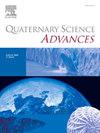Dendroseismological investigation of redwood trees along the North Coast section of the San Andreas Fault
IF 2.2
Q2 GEOGRAPHY, PHYSICAL
引用次数: 0
Abstract
Sequoia sempervirens (coast redwood) tree rings have the potential to annually resolve late-Holocene earthquakes on the northern San Andreas Fault based on direct (e.g., physical damage) and indirect (e.g., co-seismic environmental change) impacts, but scarcity of suitable samples and challenges crossdating this long-lived species have limited progress. More precise dating of the pre-1906 (penultimate) earthquake can improve hazard assessment and understanding of rupture segmentation. We target old trees (maximum >815 yr) along the North Coast section of the fault (increment cores via rope-climbing, 11 living trees; plunge cuts, 23 stumps) and employ complementary disturbance detection methods including radial-growth averaging (tree- and series-level), cataloging anatomical indicators (e.g., traumatic resin ducts, TRD), and dating structural components (e.g., reiterated trunks, leans). Multi-centennial ring-width chronologies at Fort Ross (1569−2023) and Gualala (1397−2023) promote continued study with incomplete crossdating limiting utilization of some series. Growth pulses (reductions, releases) and TRD dispersed across the record reflect dynamic environments that obfuscate detection of earthquake signals. The 1906 earthquake did not leave strong signatures on most trees, and when it did, within-tree response varied from normal presentation to discoloration, TRD, and missing rings. Synchrony of indicators at both locations identified 1678−1680 (6 of 15 trees) and 1698−1700 (8 of 16 trees) as the strongest disturbances among dated rings in the time range of the penultimate earthquake, peaking at 1698 (15.7 % of possible growth and anatomical indicators), but the triggering mechanisms for these events are unknown.
圣安德烈亚斯断层北海岸红杉树的树震学研究
根据直接(如物理破坏)和间接(如同震环境变化)影响,海岸红杉年轮有潜力每年解决圣安德烈亚斯断层北部晚全新世地震,但缺乏合适的样本和交叉测定这种长寿物种的挑战限制了进展。对1906年以前(倒数第二次)地震进行更精确的测年可以改进危险性评估和对断裂分割的理解。我们的目标是断层北海岸部分的老树(最大树龄815年)(通过绳索攀登增加岩心,11棵活树;并采用互补的干扰检测方法,包括径向生长平均(树级和系列级)、解剖指标编目(如创伤性树脂导管,TRD)和结构部件定年(如重复树干,倾斜)。Fort Ross(1569 ~ 2023)和Gualala(1397 ~ 2023)的百年环宽年代学促进了继续研究,但交叉测年不完全限制了一些序列的利用。分布在记录中的增长脉冲(减少、释放)和TRD反映了动态环境,使地震信号的探测变得模糊。1906年的地震并没有在大多数树木上留下强烈的印记,而当地震发生时,树木内部的反应从正常表现到变色、TRD和缺环不等。在第二次地震的时间范围内,这两个地点的指标同步表明1678 - 1680(15棵树中的6棵)和1698 - 1700(16棵树中的8棵)是年代年轮中最强的扰动,在1698年达到峰值(15.7%的可能生长和解剖指标),但这些事件的触发机制尚不清楚。
本文章由计算机程序翻译,如有差异,请以英文原文为准。
求助全文
约1分钟内获得全文
求助全文
来源期刊

Quaternary Science Advances
Earth and Planetary Sciences-Earth-Surface Processes
CiteScore
4.00
自引率
13.30%
发文量
16
审稿时长
61 days
 求助内容:
求助内容: 应助结果提醒方式:
应助结果提醒方式:


